Instructional Design and eLearning Development for the Managing the Multi-Generational Workforce Project
- Client: NYU langone Health
- Software: ChatGPT, Articulate Rise, Camtasia Studio, Adobe Photoshop
- Categories: eLearning development, instructional design, interactive learning
The Problem: Why do we need this course?
According to data from a survey conducted at NYU Langone Health, there seems to be a disconnect in management and overall job satisfaction when the data is sorted by generations. Although there is plenty of training and professional development opportunities for managers in the area of working in a multigenerational workforce, NYU Langone Health needs training that addresses the specific needs of the isntitution supported by data. Personalized content that caters the specific needs of the institution is needed.
Information Sources (Why using ChatGPT if we need personalized content?)
The content creation and curation, managed by a coworker and me, came from different sources. We formed a committee of key professionals that possess expertise in the areas of workplace culture and inclusion, human resources (labor relations) and organizational psychology, along with the department in charge of consuting the employee engagement survey. Each member of the committee contributed to different aspects of the content, which my coworker and I organized, curated, and presented for approval.
The VP of Organization Development then gave us a directive to tie the training with the Empathy Project, as this course is part of a larger inititative to develop professionals to show and use empathy in their everyday work. As a starting point, and to avoid repeating what the Empathy Project's website states, I used ChatGPT to generate basic content on the topic of empathy in the workplace. I used that basic information to adapt the content to the particualr needs and realities of NYU langone Health.
eLearning Development
The self-paced course was developed in Articulate Rise. Rise was selected due to its adaptiveness capabilities. No voiceover narration was created for this course, although it contains videos and links to resources that require audio. Universal Design for Learning was used in the selection of visuals and media to include in the course. All visual communication provides multiple means of representation, engagement, action and expression.
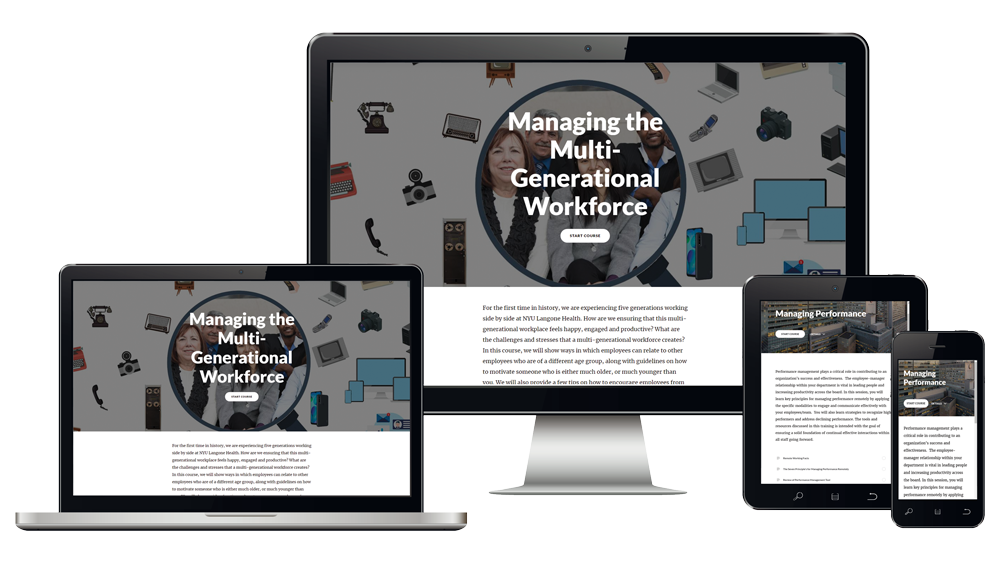
Besides the attractive, responsive design of the course, it gives learners the freedom and flexibility to further explore once each topic is covered. The design invites learners to preview a topic. The visuals add to the representation of the content.
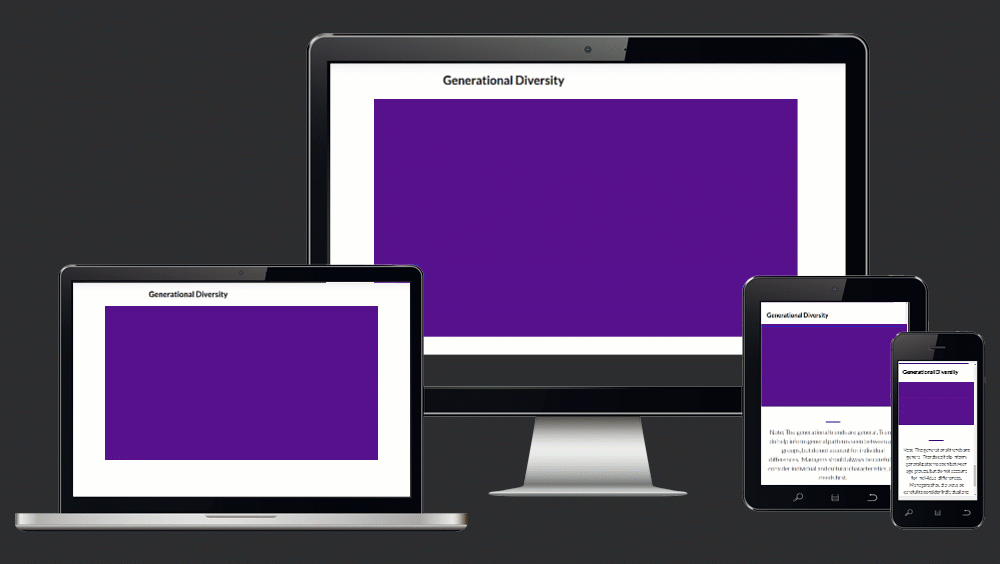
After establishing objectives and basic definitions, I created a video to explain the need and purpose of the course. The video medium provides a multimedia experience for learners to perceive the current problem that the training contributes to solve. Below is the full video.
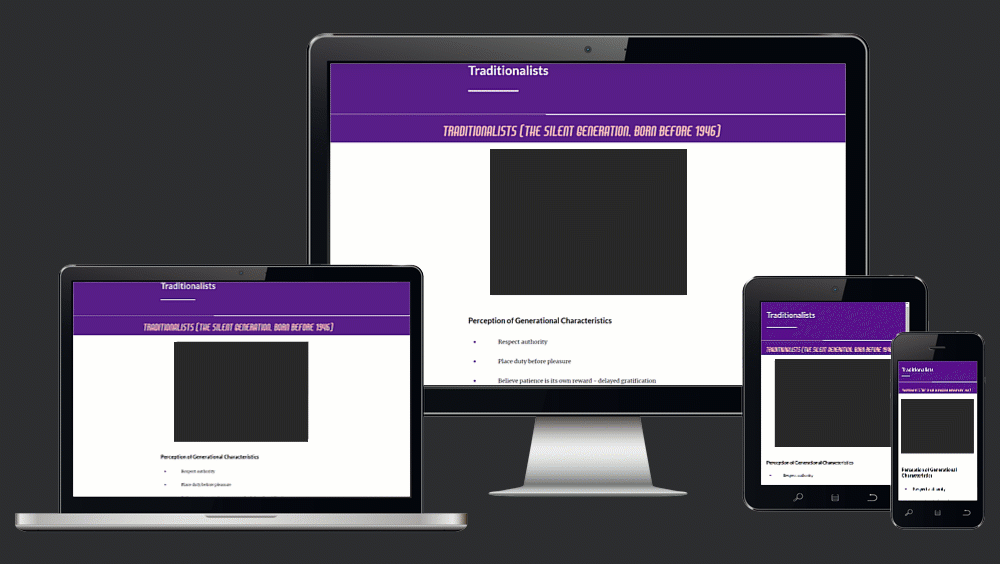
The committee decided to include an overview and general characteristics of the most common generational groups in the NYU Langone Health workforce, emphasizing the importance of understanding that such general characteristics can be different in other cultures and ethnicities. This is the visual depiction of the Traditionalists.
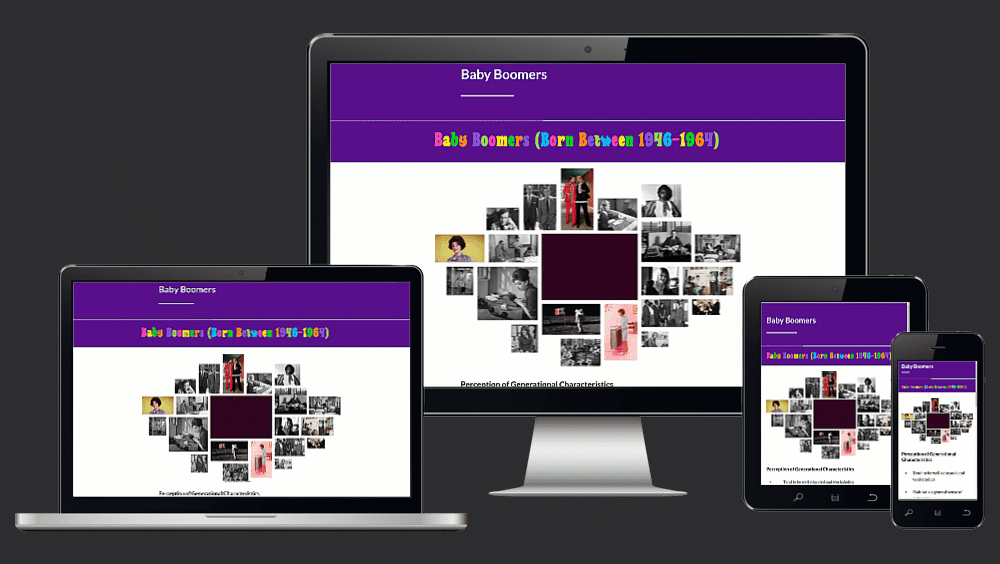
Visual depiction of the Baby Boomer generation.
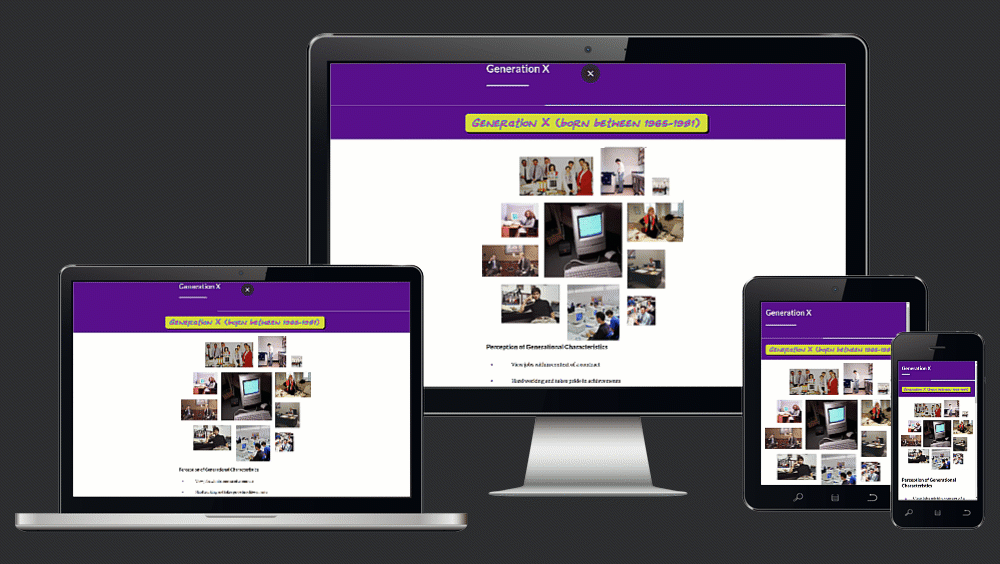
Visual depiction of Generation X.
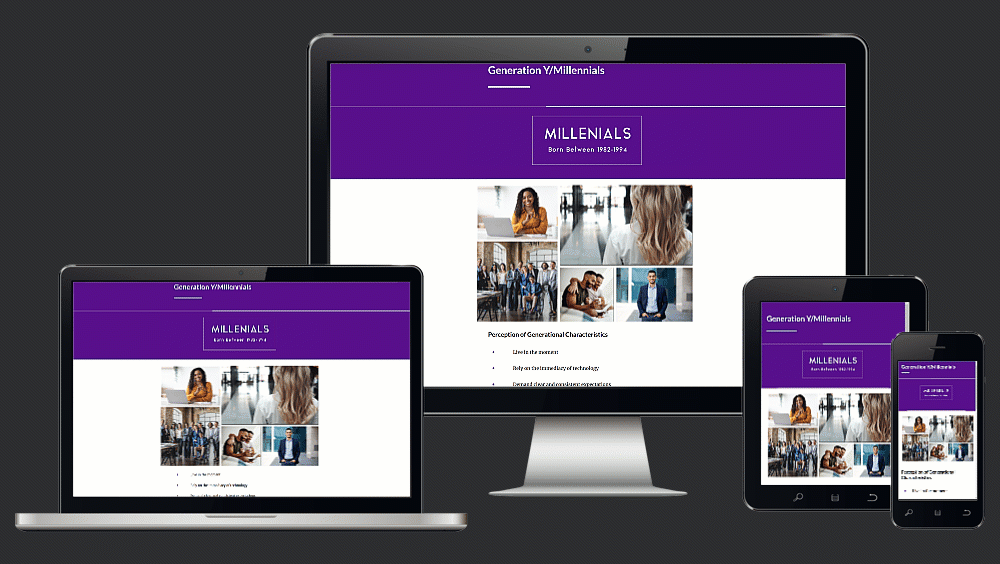
Visual depiction of the baby Generation Y, more commonly known as Millennials.
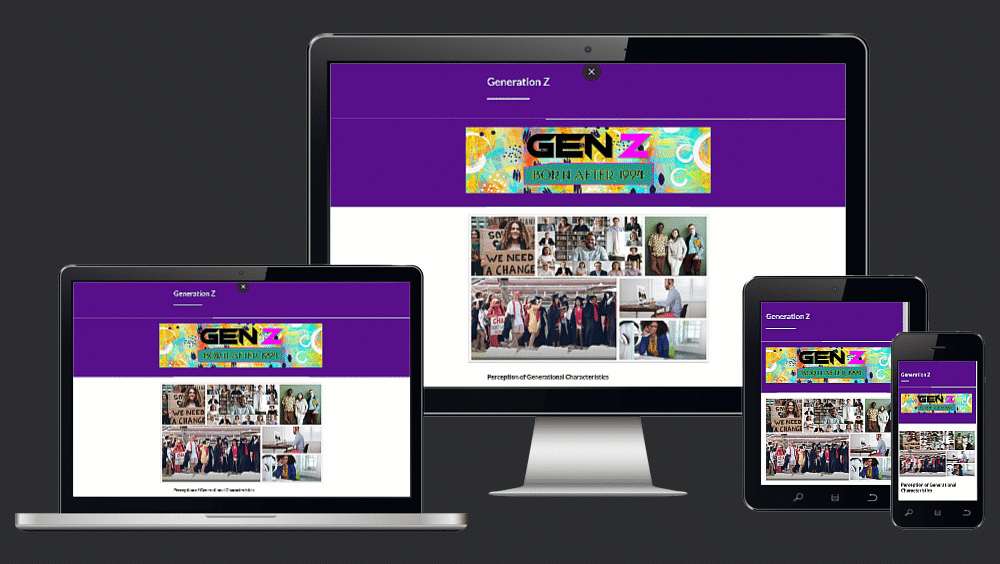
Visual depiction of the Gen-Z generation.
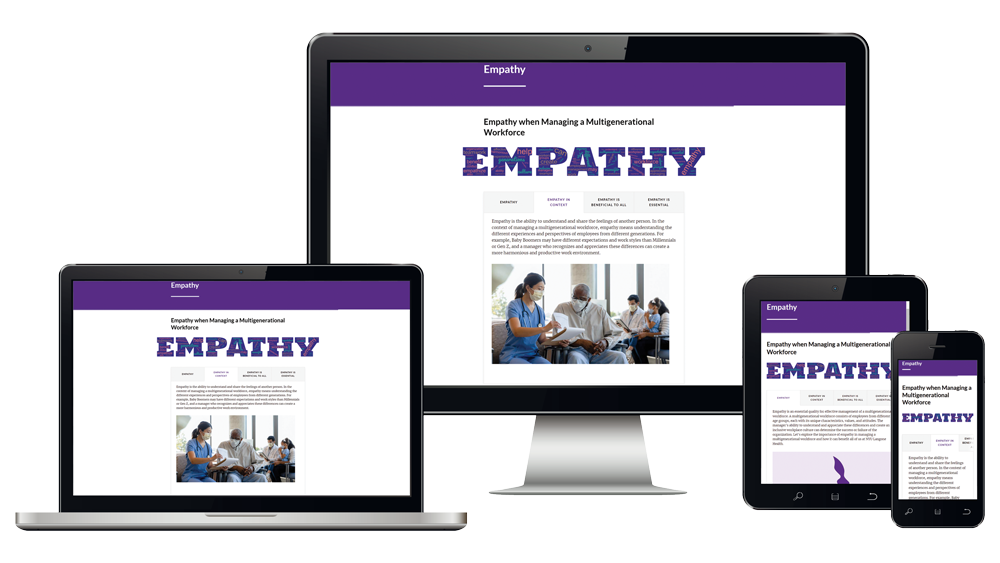
The Empathy section of the course provides the necessary content to create awareness of empathy in the workplace within a multigenerational context.

Calls to actions are delineated. They are designed to open communication and dialog between managers and their staff.
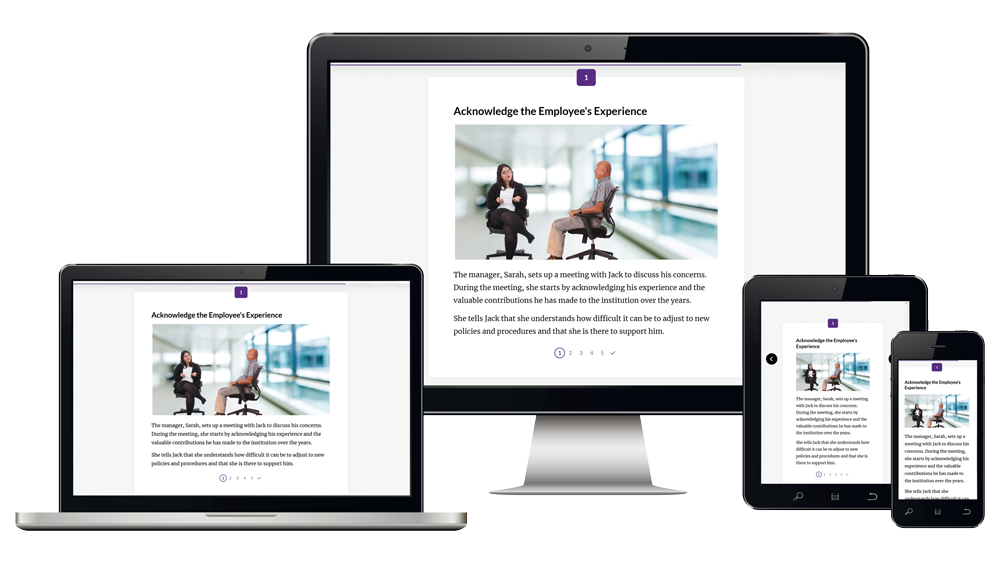
Reinforcement is applied in the form of scenarios.